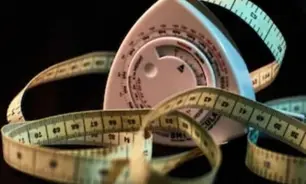WHAT IS ONE-REP MAX?
Your one rep (repetition) max (1RM) is the most weight you can lift for one rep of an exercise. It can be used to measure your progress as a lifter, to place you against other lifters, and to estimate where your lifts should be in any given period.
One rep maximums are often used as milestones as weight lifters try to surpass them. They are also often used to calculate your rep ranges across various exercises and intensities: you may be on a program that has you lifting at 70% of your 1RM one week, 90% the next. You need to know your 1RM for each exercise for these programs to make any sense. If you prefer weight lifting than cardio, then searching for a 'Gym Near Me' that has a large free weights area will help you along your fitness journey.
SIGN UP FOR YOUR FREE DAY PASS TODAY!
One rep max formula and definition
You can calculate your 1RM using GymNation ONE-REP MAX
calculator or one of the equations provided below.
For upper body exercises, find the maximum weight you can lift 4-6 times across various exercises like bench presses, overhead presses, weighted dips, and rows. Use this weight in the formula: (4-6RM x 1.1307) + 0.6998.
For lower body exercises, repeat the process using the formula: (4-6RM x 1.09703) + 14.2546.
Alternatively, warm up well, have a spotter, and work up to a heavy single lift to determine your 1RM.
This information helps you gauge your strength levels for different exercises.
Interested in diving deeper into fitness metrics? Explore our BMI Calculator, BMR Calculator, TDEE Calculator, and Body Fat Calculator for a thorough insight into your health parameters.
Bench Press Calculator Instructions
This tool by GymNation helps estimate your 1 REP MAX bench press. It calculates this by considering the weight you lift for a specific number of reps. Remember, the results are only approximate and its the same as Dumbbell bench press calculator.
To use the calculator, input the weight in the first box and choose the number of reps from the drop-down menu.
For instance, if you lifted 225lbs for 10 reps, enter 225 and select 10 reps. The calculator works with both pounds and kilograms.
If you are looking For bigger chest muscles, discover our top 5 workout choices.
ONE REP MAX-Bench Press Calculator: THE USES
Firstly, use this for goal setting. If your 1RM is below average for your experience level, aim to bring it up to average. If you're in the 80th percentile, strive to reach the 85th: make that your goal.
Challenge yourself. If your bench press 1RM is 150kg on Jan 1st, aim to hit 180kg by Christmas. Plan your programming accordingly.
Besides goal setting, knowing your 1RM is crucial for programming.
The percentage scale of your 1RM serves different purposes. These include:
50%: Explosive Power Training
Aim for around 50% of your 1RM for fast, explosive sets to boost muscle pace and speed. Try 5-6 sets of 4-5 reps. Your muscles will learn to generate power without excessive growth.
70%: Endurance Training
Hit this high rep range for muscle endurance: it helps muscles keep going under consistent loads. Sets of up to 20 reps burn calories, enhance endurance, and raise metabolism.
80%: Hypertrophy Training
Bodybuilders favor this range. Work hard with sets and reps at 80% to stress muscles for growth.
90%: Power Training
For powerlifters, heavy loads at speed build maximal force. Rest more, do fewer sets and reps to excel in this zone.


















































































